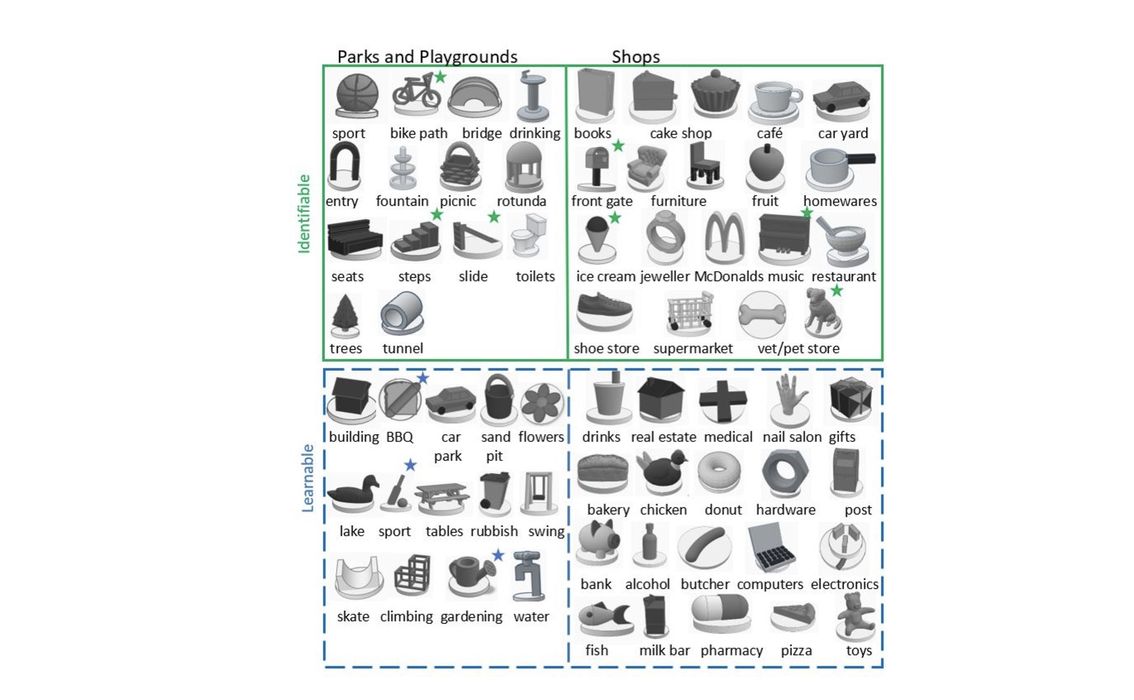
Researchers have developed a huge library of 3D printed tactile icons for visually impaired people.
Signage is everywhere in urban areas, and used everyday by everyone. We don’t even think about it, but much of the signage is made up of familiar icons. These are instantly recognizable by sight, and enable communication beyond language barriers.
The problem is that visually impaired people cannot reliably see them.
The answer might seem straightforward: just print the icons and the visually impaired can touch them.
It turns out that doesn’t work because while the icons are easily seen, their geometry might not always be recognizable by touch. Even worse, some of the icons won’t mean anything to a visually impaired person, and require a legend. For the visually impaired, that means a Braille legend that will take time to read and interpret.
The researchers wanted to simplify the situation and develop a set of 3D printable icons that were both touch-recognizable and instantly interpreted by the user.
Their process involved considerable testing of both visually impaired and visually enabled volunteers. The first step was to determine shapes that were recognizable. Sighted people can get an understanding of what this means by touching an object and trying to use your mind to figure out what it is. Sometimes it is quite difficult, even though through sight it is recognizable. The researchers explained:
“Twenty nine of these icons could consistently be identified and correctly associated by at least 80% of both sighted and blind touch testers. Six of the remaining successful icons had recognition rates of only 50-70% by sighted touch testers. These icons were somewhat more complex or with less well-defined features that novice touch readers may have had difficulty detecting.”
The researchers found that visually impaired users could repeatedly associate a 3D icon with a meaning if a legend was provided once.
They also tested the size of the icons to determine the most effective diameter of the icon. They found that 40mm diameter was “consistently better” than 20mm icons. However, this varied by shape. Some features are more apparent at different sizes.
The researchers developed a methodology for creating 3D tactile icons, as the initial set they produced will clearly need to be extended by others as new uses emerge.
Testing involved icons related to two different environments, a shopping area and a park. They found that some icons were instantly recognizable in context, even without a legend. Others required a legend as the meaning might not be clear even if the shape was identifiable.

Above you can see a sample of some icons and their classification into identifiable and learnable.
The work was so extensive they even came up with a new term to describe these 3D icons: Tacticons.
If you’re interested in trying out some tacticons, the researchers have uploaded a large set of them to Thingiverse, where they can be downloaded and printed.
Via ArXiv and Thingiverse
